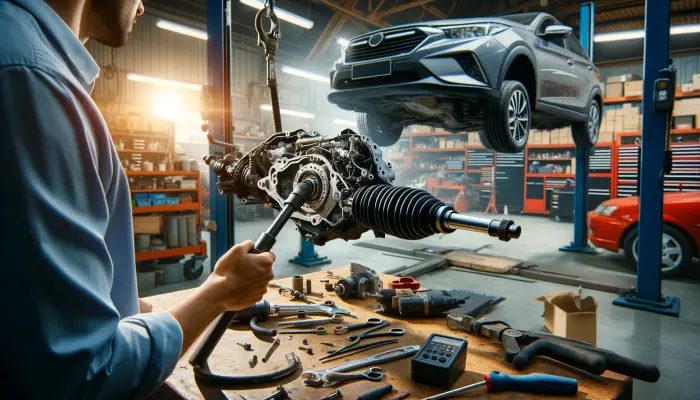The steering rack is a key component in a car's steering system, converting the steering wheel's rotation into the turning of the wheels. This mechanism undergoes significant stress, especially when driving on uneven roads. Therefore, regardless of the car's make, the steering rack often requires repair or replacement. Recognizing the signs of a malfunctioning steering rack will help you identify issues.
What Is a Steering Rack
The steering rack is a mechanism consisting of a rack and pinion. The rotation of the steering wheel activates the pinion, which moves the toothed rack left or right, causing the wheels to turn in the desired direction. Modern cars are equipped with steering boosters - hydraulic or electric - to facilitate steering. They ensure smooth and easy steering but can slightly reduce steering sensitivity.
Symptoms of Malfunctions
The main signs indicating a malfunction in the steering rack include:
- Difficulty in turning the steering wheel;
- Oil leakage from the steering mechanism;
- Knocking or humming from the front of the car when driving over bumps;
- Humming noise when turning the steering wheel;
- Sticking of the steering wheel.
If you notice one or more of these symptoms, it is essential to promptly visit a service center for diagnosis and repair.
Determining the Fault
Steering rack malfunctions can be categorized into three types: knocks, hums, and leaks. Leaks are typical for systems with hydraulic boosters, as electric boosters operate without oil.
Knocks can be superficial or internal. Superficial knocks arise from issues with the tie rod end. Internal knocks indicate wear and tear on the pistons and rack guides.
Oil leaks occur due to faulty seals and are usually noticeable by oil traces under the car.
A hum may indicate a malfunctioning hydraulic booster pump or electric booster motor.
Causes of Malfunction
The primary cause of steering rack malfunction under careful operation is wear and tear. Each component has a lifespan determined by the manufacturer. Steering racks are most frequently replaced in cars that are driven on poor roads.
Another common cause is damage to the protective boot (dust cover). Moisture, dust, or dirt entering the mechanism can lead to serious breakdowns.
